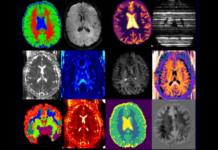Efficient and secure patient information systems have become paramount in today’s fast-paced and technology-driven world. Healthcare providers are constantly striving to enhance their ability to manage and access patient data, ensuring accurate diagnoses and effective treatment plans. This blog post aims to delve into the intricacies of patient information systems, exploring their benefits, features, and considerations for implementation.
What is a patient information system?
A patient information system is a comprehensive software solution designed to capture, store, and manage patient data securely and organized. It serves as a centralized repository for medical records, diagnostic reports, treatment history, and other pertinent information related to patient care. By streamlining data management, patient information systems enable healthcare providers to make informed decisions, improve collaboration, and enhance the overall patient experience.
What are the key features of a patient information system?
– Electronic Health Records (EHR): Patient information systems provide a digital platform for healthcare providers to maintain and update electronic health records. This includes personal details, medical history, allergies, medications, laboratory results, and imaging reports.
– Interoperability: A robust patient information system should have the capability to seamlessly exchange data with other healthcare systems, such as laboratory information systems, radiology systems, and pharmacy systems. This promotes efficient communication and eliminates the need for redundant data entry.
– Appointment Scheduling: Integration with appointment scheduling modules allows healthcare providers to manage patient visits and optimize their workflow efficiently.
– Clinical Decision Support: Patient information systems often include clinical decision support tools, such as alerts, reminders, and evidence-based guidelines, to assist healthcare providers in making accurate diagnoses and treatment decisions.
– Security and Privacy: Data security and patient privacy are of utmost importance in any patient information system. Strong encryption, access controls, and audit trails ensure that patient data remains confidential and protected from unauthorized access.
How does a patient information system benefit healthcare providers and patients?
– Improved Efficiency: Patient information systems eliminate the need for manual record-keeping and paper-based documentation, reducing administrative burdens and allowing healthcare providers to focus more on patient care.
– Enhanced Communication and Collaboration: Patient information systems facilitate better communication and collaboration among healthcare providers by providing a centralized platform for data sharing, leading to improved care coordination and patient outcomes.
– Access to Real-Time Information: With patient information systems, healthcare providers can access up-to-date patient data, enabling them to make informed decisions quickly and accurately.
– Patient Empowerment: Patient portals within the patient information system empower patients to access their medical records, schedule appointments, request prescription refills, and communicate with their healthcare providers, fostering a more engaged and informed patient population.

Conclusion
Patient information systems have revolutionized the way healthcare providers manage and access patient data. From electronic health records to streamlined workflows, these systems offer numerous benefits for both healthcare providers and patients. As technology continues to advance, it is crucial for healthcare organizations to embrace patient information systems to enhance the quality of care, improve patient outcomes, and ensure data security and privacy. By implementing a robust patient information system, healthcare providers can pave the way for a more efficient and patient-centric healthcare system.


